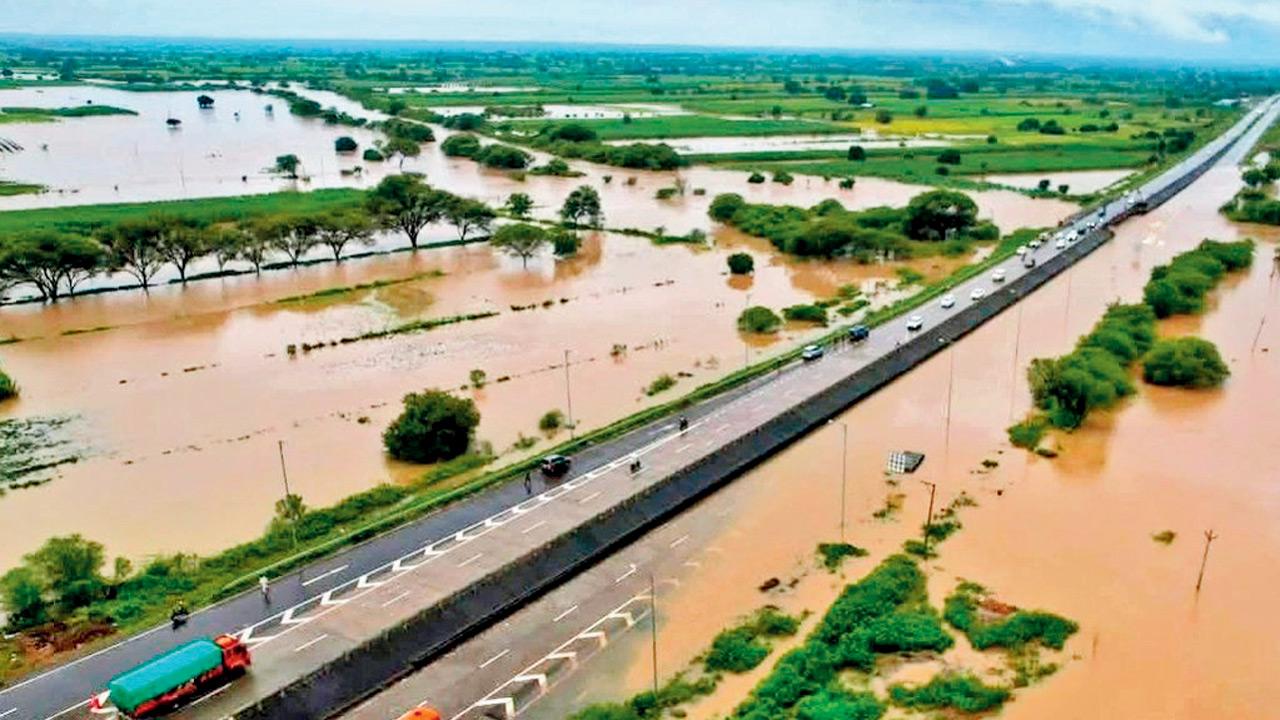While the government has temporarily halted loan recovery, this relief cannot be stretched for years or indefinitely—unless banks are formally asked to restructure loans or defer recovery for a longer period. Farmers will soon have to start repaying credit or risk being tagged as defaulters. This status would close doors to fresh loans, making it difficult for many farmers to buy seeds, fertilizers, and pesticides for the upcoming crop season.
In such a scenario, there will be no sowing, no harvest, and no income. The farming community, already reeling under a crisis, will be pushed into further debt and deeper trouble. Clearly, farmers need immediate relief to get back on their feet.
### The Urgency of a Loan Waiver
A loan waiver has become a survival necessity for two main reasons: one, because recent rains have washed away crops, and two, because the ruling Mahayuti alliance (comprising the BJP, Eknath Shinde-led Shiv Sena, and Ajit Pawar-headed NCP) promised during the 2024 assembly campaign to wipe out all farmers’ loan books.
Over eight months after coming to power, the alliance has so far dragged its feet on implementing the loan waiver. Chief Minister Devendra Fadnavis and his deputies Shinde and Pawar have reiterated that they have not forgotten their promise and that the waiver will happen “at the appropriate time”—a time that, so far, does not seem to have arrived.
Ideally, given the current crisis of a “wet drought,” now is the right time for the promised loan waiver.
### The Debate: Will a Loan Waiver Help?
However, many experts opine that a loan waiver may not offer immediate relief to farmers. In reality, it benefits banks more than the farmers themselves. The waiver money goes straight to the lenders, helping financial institutions recover dues but not solving the underlying issue of farm distress.
It does not put fresh capital in the hands of farmers, who desperately need funds to invest in the upcoming crop cycle—sown in winter and harvested during March and April. Without this, the cycle of distress will continue.
### The Challenge of Climate Change
Another significant challenge is the unpredictability of weather. Due to climate change, delayed, excessive, or insufficient monsoon spells have made farming extremely risky. Statistics on crop damage in recent years serve as stark evidence.
According to state government records, over the past nine years, 519 lakh hectares of farmland across the state have been damaged due to unseasonal rain. Recently, during his visit to flood-affected areas of Marathwada and Solapur, CM Fadnavis acknowledged that climate change is taking a toll on the agricultural sector.
### Historical Context of Loan Waivers
Loan waivers are not new to Indian politics. In 2008, the UPA government announced a nationwide loan waiver scheme reportedly benefiting 70 lakh farmers from Maharashtra. A few years later, in 2017, then CM Fadnavis rolled out a ₹34,000 crore loan waiver aiming to bail out around 67 lakh debt-ridden farmers. Two-and-a-half years later, in 2020, Uddhav Thackeray, the then CM, introduced another waiver.
Agricultural scientist M.S. Swaminathan famously warned, “If agriculture goes wrong, nothing else will have a chance to go right.” This highlights the urgent need for financial support, policy reforms, and access to resources for farmers.
### The Way Forward: Well-Planned Financial Support
On the other hand, a well-planned, sizable financial package could make a real difference. Direct support to farmers will ensure that the community receives immediate assistance to regain lost ground and attempt a comeback from the current crisis.
If the government fails to meet these basic requirements, consequences could include rising farmer debt, increased costs of essential commodities, and higher vegetable prices, which would in turn drive inflation levels up. Insufficient support may also force some farmers to migrate to cities, potentially leading to social unrest.
The human cost is severe. Not all, but many farmer suicides are linked to financial distress. The latest National Crime Records Bureau (NCRB) report mentions that in 2023, 10,786 farmers and agricultural workers took their own lives. Maharashtra accounted for the highest share, with nearly 39% of these tragic deaths. In 2025 alone, 767 farmers died by suicide in Maharashtra, underscoring the deepening crisis.
### Government Response and Interim Relief
Aware of the gravity of the situation, during his Dussehra rally speech, Eknath Shinde promised farmers every possible help from the government and his party to pull the community out of crisis. Besides assurances, Shinde also pleaded with farmers not to take extreme steps.
For now, as interim relief, farmers are being provided with ₹10,000 in cash along with 10 kg of rice and 10 kg of wheat. But what farmers truly need is not interim help, but sizeable and timely relief that enables them to survive today—and comprehensive loan waiver packages to help them rebuild their livelihoods.
Without this, the cycle of debt will continue, and nothing will change in the lives of farmers.
https://www.mid-day.com/news/opinion/article/you-cant-waive-a-promise-23597114


